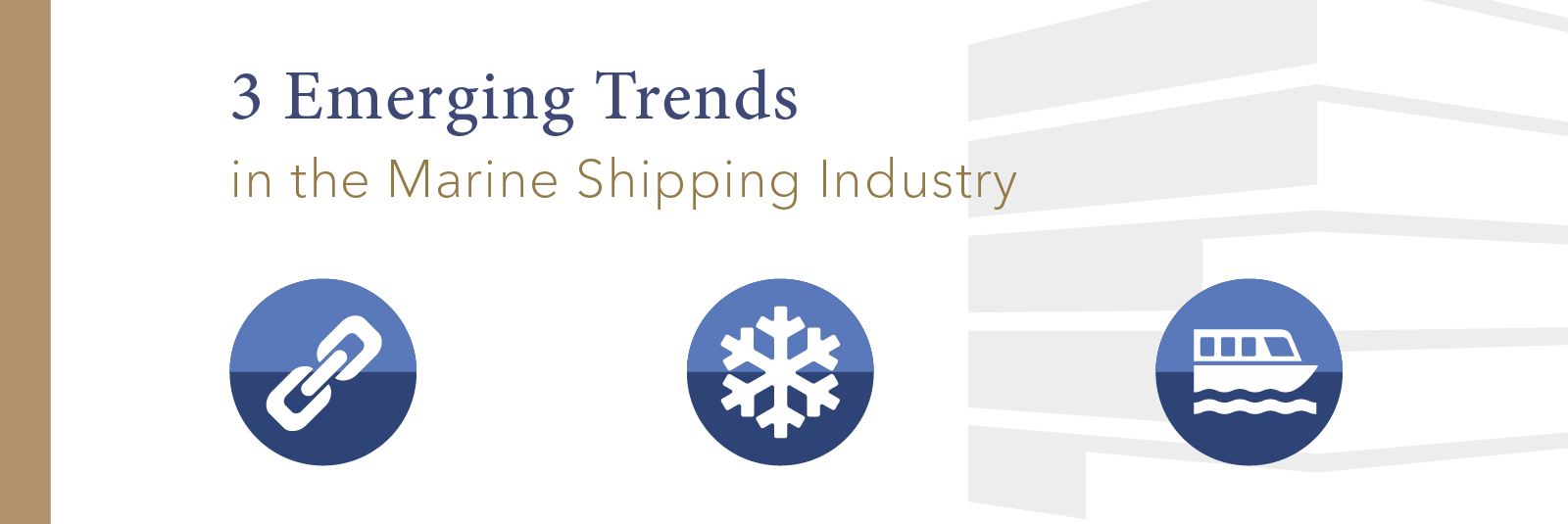Looking into our crystal ball at the future of marine shipping, we’re seeing some dynamic and ingenious new ways of doing business. Globalization and containerization are established facts, but we’re expecting these three trends to completely reshape the industry:
- Blockchain Technology
Originally devised for Bitcoin and now commonly used by financial institutions, blockchain technology is a secure, decentralized, peer-to-peer public ledger that’s a game changer for the shipping industry. It works by logging every transaction as a “block,” which are then recorded in chronological order and copied to nodes (network computers). After the information is stored in a block, it cannot be changed or deleted unless the subsequent blocks are also changed and verified by the entire network.
For example, shipping professionals are using blockchain technology for “smart contracts.” These contracts self-execute in a blockchain — consensus protocols determine the sequence of actions needed to occur per the contract and automate calculations, approvals, and other transacting activities.
For the shipping industry, blockchain technology is revolutionary. It turns complex processes paperless, eliminates the use of disconnected databases, decentralizes and authenticates information in real time, and cuts costs.
- Refrigerated Cargo
Previously, only products requiring controlled room temperature (68-77℉) were considered candidates for containerized marine freight shipping, but there’s been a recent increase in shipping refrigerated products (35-46℉) via ocean.
Why? Huge advancements in technology have propagated this trend, including:
- Temperature-controlled packaging
- Temperature-controlled sea containers with smart technology
- Real-time tracking of onboard environments, including inside shipping containers
- Increased insulation and redundant mechanical equipment
- Development of GDP-compliant shipping programs specifically for temperature-controlled products
These advances in tracking technology, equipment design, and shipping solutions have allowed shippers to confidently and successfully transport refrigerated products over the ocean — we only expect this trend to grow in the coming years.
- Autonomous Vessels
Driverless cars are motoring around roads as we speak, but what about crewless boats? Autonomous vessels aren’t as far off as you might think. In late 2016, the UK's Automated Ships Ltd and Norway's Kongsberg Maritime announced they would “build the world's first unmanned and fully autonomous ship for offshore operations.” The Trondheim fjord in Norway is the designated testing ground for the vessel, which is expected to be operational this year (2018).
Additionally, the Finnish Maritime Cluster has ambitious plans to develop the first global ecosystem for autonomous marine transport. Called “One Sea,” cargo ships and freight transportation are running the initial pilots tests, with the goal of developing a fully autonomous system in the Baltic Sea by 2025. The marine shipping industry, just as the overland freight industry, will be facing some major changes within the next few years due to this trend of automated vehicles.
These emerging trends will dramatically impact the shipping industry and the global trade it drives. Tracking these trends and learning to adapt to them will be an important part of the job for anyone in industry.



